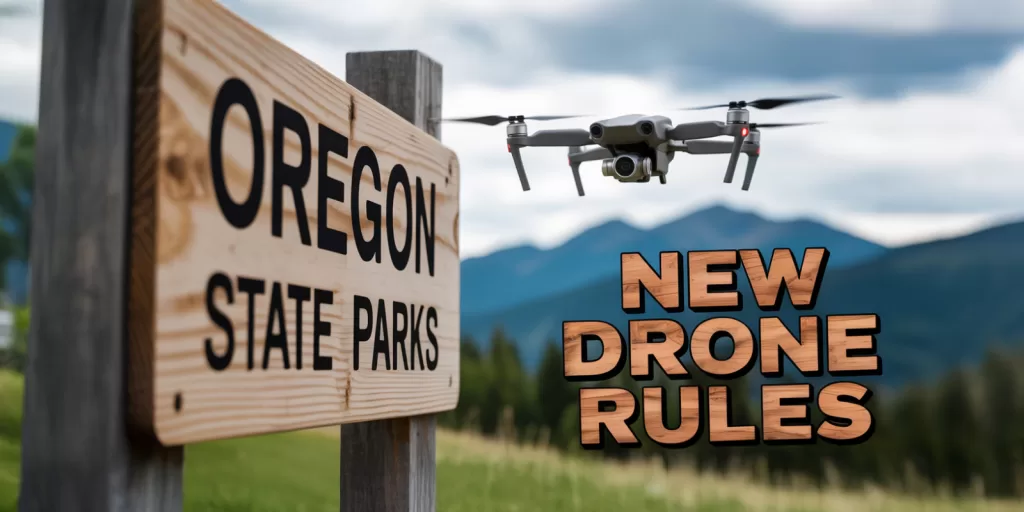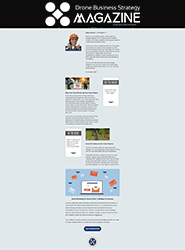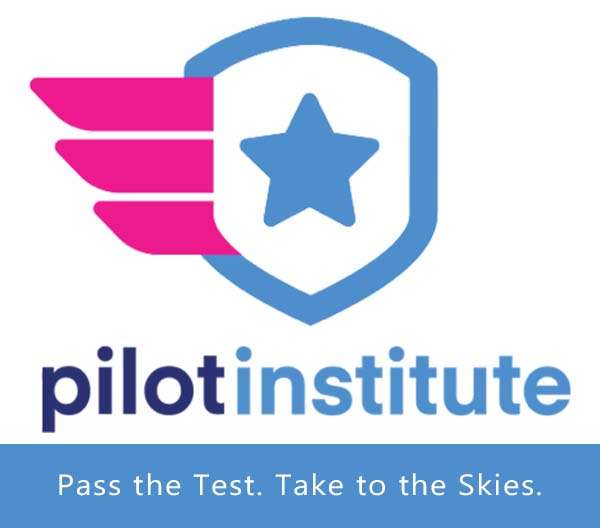
For drone pilots in Oregon, change is in the air—and it’s significant. The Oregon Parks and Recreation Department (OPRD) is moving forward with a sweeping update to drone takeoff and landing policies across the state park system. After years of study, stakeholder engagement, and public feedback, Oregon is on the brink of formalizing drone rules that could permanently reshape how—and where—you can fly.
Seven Years in the Making
This journey began over seven years ago with OPRD conducting internal reviews and fielding a growing number of inquiries from drone hobbyists and professionals. By 2018, the department realized the need for clearer guidance but was advised by the Oregon Department of Justice that formal rulemaking authority would be required to enforce such regulations. That authority finally came in 2021 when state lawmakers passed legislation giving OPRD the green light to craft official drone rules.
The legislative intent? Balance—allow responsible recreational drone use in designated areas while safeguarding natural resources, wildlife, and the overall visitor experience. Blanket bans weren’t the goal. Instead, Oregon needed a framework to guide thoughtful, location-based decisions.
Public Feedback Drives the Process
After initiating the rulemaking process, OPRD quickly hit pause in 2022. Early public feedback made it clear that more groundwork was needed. The department formed a diverse work group including representatives from:
- Oregon Department of Fish and Wildlife
- U.S. Fish and Wildlife Service
- Portland Audubon
- Recreational drone pilots
- Oregon Shores Conservation Coalition
- Tribal governments
- OPRD staff
This group toured multiple parks—including Smith Rock, Silver Falls, and Halen Bay—to gain first-hand insights from stakeholders like rock climbers, wildlife experts, and coastal advocates.
Draft Criteria: Prohibited, Conditional, and Open Areas
From these efforts came a proposed classification system for drone takeoff and landing zones:
1. Prohibited Areas
Drones would generally not be allowed in zones with:
- Sensitive cultural or ecological resources
- Campgrounds (due to privacy and noise concerns)
- Nearby protected lands with existing restrictions
- Wildlife nesting sites or protected species habitats
- Park areas leased to other entities
- Areas without recreational public access
Exceptions may be available via special use permits—but those would be rare and undergo intense scrutiny.
2. Conditional Areas
These zones might allow drone use—but only under strict limitations, such as:
- Seasonal restrictions to avoid disturbing wildlife
- Day-use permit requirements
- Quotas on the number of operators
- Location-specific conditions based on environmental data
The goal here is to provide controlled access without sacrificing ecological integrity or visitor safety.
3. Open Areas
These are the places that don’t meet the criteria for prohibited or conditional classification. In these zones, drone takeoff and landing would be generally allowed, though users would still be required to follow best practices, including:
- Compliance with FAA regulations
- Avoidance of wildlife disturbance
- Full control and safe operation of the aircraft
- Awareness of environmental conditions and park boundaries
What the Drone Community Is Saying
During the public comment period (Oct–Dec 2023), a wide range of opinions poured in:
- Some called for stricter rules—or even a complete ban on recreational drone use.
- Wildlife advocates cited past incidents of nest disruption, calling for broader protections.
- Equestrian groups raised concerns about drones spooking horses on shared trails.
- Others voiced frustration over the lack of draft zoning maps during the review, making it difficult to assess real-world impacts.
Some commenters even proposed flipping the default assumption—restricting drones in all parks unless a zone is specifically marked open, rather than allowing them unless restricted.
There were also calls for:
- Mandatory drone registration with park management
- No-fly zones near sensitive wildlife areas (like the Oregon Coast National Wildlife Refuge Complex)
- Clarification of what qualifies as a drone (e.g., model sailplanes)
An Adaptive, Evolving Framework
To its credit, OPRD is not treating these criteria as fixed. Instead, they’re part of an adaptive management policy—a living framework designed to evolve through continued monitoring, stakeholder input, and public engagement. Park-specific maps are in development and will be reviewed with local input before implementation.
Next Steps for 2025 and Beyond
OPRD is currently reviewing all public feedback and may reconvene the work group to refine the draft criteria. If all goes smoothly, formal rulemaking could resume as early as this spring, triggering a new public comment period and the formation of a new rules advisory committee.
This is a pivotal moment for drone pilots in Oregon.
What You Should Do Now
- Stay Informed: Follow updates from OPRD and local park offices.
- Fly Responsibly: Respect wildlife, avoid crowded areas, and always follow FAA rules.
- Prepare for Change: Understand that designated drone zones will likely shrink—and access may become more regulated.
- Engage: Take part in public comment periods when they reopen. Your voice matters in shaping policy.
Takeaway
Oregon State Parks are about to change drone rules forever. The way you fly—and where—will never be quite the same. But with thoughtful planning, collaboration, and responsible practices, drone pilots can still enjoy access while helping protect the lands that make Oregon special.
If you have any questions, let us know! If you’d like to hire us, you can get more information here.
Written by: Tony Marino, MBA – FAA Certified Part 107 Commercial Drone Pilot and Chief Business Strategist at Aerial Northwest
Disclaimer: The information provided in this blog post is for general informational purposes only and should not be construed as legal advice.
Drone Pilot MBA (Podcast):
Oregon State Parks Are About to CHANGE Drone Rules FOREVER
Resources
- FAA Resources: FAA DroneZone
- Article: Where Can You Fly Your Drone In Oregon?
Drone Service Providers Alliance
Commercial Drone Alliance - OPRD Drone Classification Criteria Feedback Page
https://www.oregon.gov/opr/PRP/pages/drone-criteria-feedback.aspx - OPRD Drone Open House Recording (November 8, 2023)
https://www.youtube.com/live/JU2s8vvViVs?feature=shared - FAA – Unmanned Aircraft Systems (UAS)
http://www.faa.gov/uas/ - Oregon State Parks Official Website
https://www.oregon.gov/oprd/pages/index.aspx - Oregon Conservation Strategy – Strategy Species
https://oregonconservationstrategy.org/ocs-strategy-species/ - U.S. Fish & Wildlife Service – National Survey
https://www.fws.gov/program/national-survey-fishing-hunting-and-wildlife-associated-recreation-fhwar - Dean Runyan Associates – 2008 Wildlife Recreation Report
https://www.dfw.state.or.us/fish/CRP/docs/coastal_coho/economic_reports/Report_5_6_09.pdf - Reintsma et al. (2018) – Waterbird Journal Study
https://doi.org/10.1675/063.041.0314 - Weston et al. (2020) – Drone Disturbance Study
https://doi.org/10.1111/1365-2664.13575 - Vas et al. (2015) – Drone Impacts on Wildlife
http://dx.doi.org/10.1098/rsbl.2014.0754 - Audubon – Bolsa Chica Tern Drone Incident
https://www.audubon.org/news/a-drone-crash-caused-thousands-elegant-terns-abandon-their-nests - Terence C. Gannon – “Inspiration” (2020)
https://terencecgannon.com/articles/2020/01/inspiration - Terence C. Gannon – “Return to Rocky Knoll” (2016)
https://terencecgannon.com/articles/2016/11/return-to-rocky-knoll - Lincoln City Audubon Society
http://www.lincolncityaudubon.org
Starting Your Own Drone Service Business
Pick up your copy today on Amazon and wherever fine books are sold.

DRONE BUSINESS STRATEGY MAGAZINE
A free digital publication made exclusively for all small business drone pilots to them help start-up, become profitable while sustaining a competitive advantage within the drone service industry sector they opt to serve.
“If you love to fly, we’d love to have you come aboard!”
We share your information with no one. Our Privacy Policy.










Leave a Reply
Your email is always safe with us.